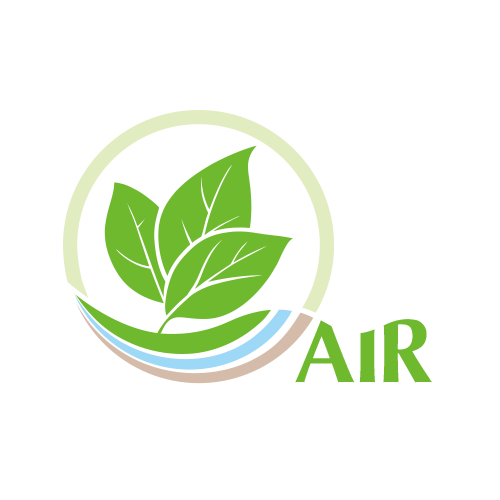How to Join AIR
We look forward to working with you to help your nursery effectively implement the Phytophthora Working Group's nursery Phytophthora Best Management Practices (NPBMPs). Nurseries that follow these practices have been shown to reliably produce nursery stock free of detectable Phytophthora contamination. Using clean nursery stock produced under these BMPs helps protect native plant communities, as well as planted landscapes, from damaging permanent infestations of these destructive and invasive Phytophthora pathogens.
To get started, email the AIR Team at airnursery@ucdavis.edu and provide your contact information. We will create a unique online Nursery Evaluation Form (via Google sheets) that your nursery representative will be required to fill out. In the form, each nursery documents how it complies with the NPBMPs. Once the nursery self-reports its practices, an AIR program evaluator will review the form to assess BMP compliance and highlight items that need clarification or where it appears that improvement may be needed. The evaluator will use this to help focus on items that should be reviewed during the on-site visit.
Steps to obtain nursery accreditation
A primary goal of the AIR program is to help nurseries succeed at consistently producing clean (Phytophthora-free) plants. This is a collaborative effort between the AIR program and participating nurseries. Because nurseries differ in how they are configured and run, different solutions may be needed to address the various components of clean nursery production. The AIR program works with nurseries to identify problem areas and help nurseries find satisfactory ways to address them. The main steps in the AIR accreditation process are discussed below.
Completing and reviewing the nursery evaluation form
- A custom spreadsheet (the Nursery Evaluation Form or NEF) is provided to the nursery, with edit permission for nursery data fields assigned to specified nursery personnel. Both the nursery and evaluators have access to the NEF throughout the entire accreditation process, and all changed versions are saved automatically.
- Nursery staff reports on their implementation of the NPBMPs by completing nursery data input fields in the spreadsheet, using note fields as necessary where additional explanation is needed.
- AIR evaluators review the spreadsheet and rate NPBMP compliance for each of the listed practices to the extent possible. Items needing further information or clarification are flagged and copied to nursery inspection datasheets.
- AIR evaluators visit the nursery. They collect data for spreadsheet sections designated for evaluator input, collect information on flagged items, discuss observations of nursery practices, provide recommendations for improved practices as needed, and photo document nursery areas.
- If time and staffing permit and plants are at a suitable stage, leachate baiting tests may be conducted on plant material selected by AIR evaluators. Alternatively, testing may be conducted in a separate nursery visit. Biased sampling is used to include plants with the highest risk of infection in these tests.
Overall nursery rating and follow-up to accredit the nursery
- AIR evaluators enter additional data from the nursery visit and assign corresponding risk ratings (no risk, low risk, moderate risk, high risk) (See table) for every practice providing comments and recommendations in the spreadsheet as needed. Once these individual risk ratings are assigned, an aggregate rating is assigned fore each page of the NEF (e.g., Nursery layout, Sanitation practices, Propagules, Media, etc). These aggregate ratings are used to assign an overall nursery rating. If the overall rating is green, indicating that the nursery is in full compliance with the Nursery Phytophthora BMPs, the nursery will receive AIR accreditation. The evaluators may still note areas where some low risk may still exist and provide suggestions for addressing them.
- If practices that pose a moderate to high risk of Phytophthora infection are identified, or if there are enough low risk practices to jeopardize the nursery’s ability to consistently produce clean plants, the AIR program will normally postpone making the overall nursery rating pending required changes. The nursery and AIR program evaluators continue to use the NEF to document changes and revise ratings as appropriate. Descriptions and photos of the changes made can be added to the NEF by the nursery so the evaluators can review and reassess the practices. A followup visit may also be scheduled if appropriate. Some changes are easier to make than others, but as long as a nursery is working on making progress toward accreditation, an open (incomplete) rating can be maintained until the nursery is able to receive an overall green rating and AIR accreditation.
| Name | Description | Required actions |
| Green (G) | No added risk: acceptable practice in compliance with PWG-BMPs | None |
| Yellow (Y) | Low risk: minor departure from PWG-BMP practices or standards increases risk slightly | Follow evaluator recommendations if possible |
| Orange (O) | Moderate risk: substantial departure from PWG-BMPs results in moderate increase risk | Correction required. Existing stock may be noncompliant |
| Red (R) | High risk: critical noncompliance with PWG-BMPs; unacceptable high risk | Correction required. Existing stock is noncompliant |
